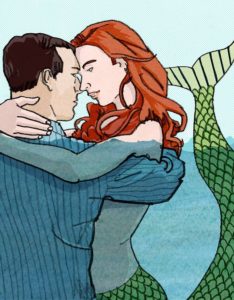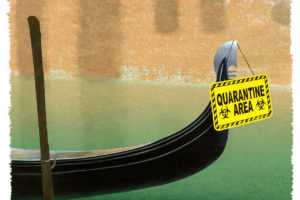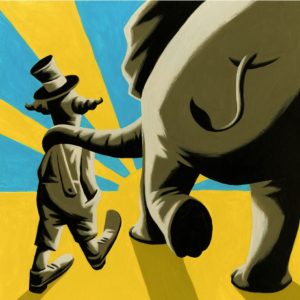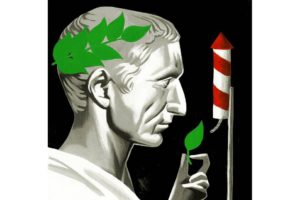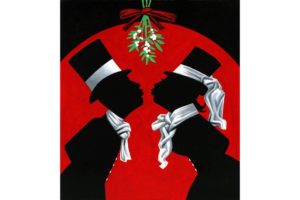From 13th-century Egypt to the Wild West, the standard deck of 52 cards has provided entertainment—and temptation.

ILLUSTRATION: THOMAS FUCHS
More than 8,500 people traveled to Las Vegas to play in this year’s World Series of Poker, which ended July 16—a near-record for the contest. I’m not a poker player myself, but I understand the fun and excitement of playing with real cards in an actual game rather than online. There’s something uniquely pleasurable about a pack of cards—the way they look and feel to the touch—that can’t be replicated on the screen.
Although the origins of the playing card are believed to lie in China, the oldest known examples come from the Mamluk Caliphate, an Islamic empire that stretched across Egypt and the eastern Mediterranean from 1260 to 1517. It’s significant that the empire was governed by a warrior caste of former slaves: A playing card can be seen as an assertion of freedom, since time spent playing cards is time spent freely. The Mamluk card deck consisted of 52 cards divided into four suits, whose symbols reflected the daily realities of soldiering—a scimitar, a polo stick, a chalice and a coin.
Returning Crusaders and Venetian traders were probably responsible for bringing cards to Europe. Church and state authorities were not amused: In 1377, Parisians were banned from playing cards on work days. Like dice, cards were classed as gateway vices that led to greater sins. The authorities may not have been entirely wrong: Some surviving card decks from the 15th century have incredibly bawdy themes.
The suits and symbols used in playing cards became more uniform and less ornate following the advent of the printing press. French printers added a number of innovations, including dividing the four suits into red and black, and giving us the heart, diamond, club and spade symbols. Standardization enabled cards to become a lingua franca across cultures, further enhancing their appeal as a communal leisure activity.
In the 18th century, the humble playing card was the downfall of many a noble family, with vast fortunes being won and lost at the gaming table. Cards also started to feature in paintings and novels as symbols of the vagaries of fortune. The 19th-century short story “The Queen of Spades,” by the Russian writer Alexander Pushkin, beautifully captures the card mania of the period. The anti-hero, Hermann, is destroyed by his obsession with winning at Faro, a game of chance that was as popular in the saloons of the American West as it was in the drawing rooms of Europe. The lawman Wyatt Earp may have won fame in the gunfight at the OK Corral, but he earned his money as a Faro dealer in Tombstone, Ariz.
In Britain, attempts to regulate card-playing through high taxes on the cards themselves were a failure, though they did result in one change: Every ace of spades had to show a government tax stamp, which is why it’s the card that traditionally carries the manufacturer’s mark. The last innovation in the card deck, like the first, had military origins. Many Civil War regiments killed time by playing Euchre, which requires an extra trump card. The Samuel Hart Co. duly obliged with a card which became the forerunner to the Joker, the wild card that doesn’t have a suit.
But we shouldn’t allow the unsavory association of card games with gambling to have the last word. As Charles Dickens wrote in “Nicholas Nickleby”: “Thus two people who cannot afford to play cards for money, sometimes sit down to a quiet game for love.”







